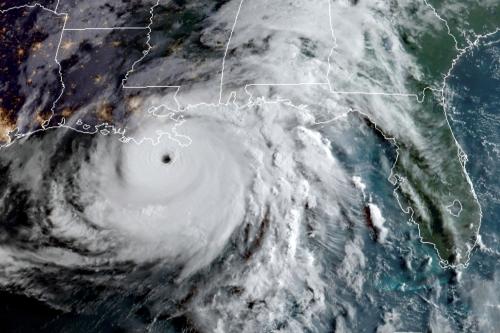
Welcome to Tulane's Laboratory Hurricane Preparedness Resources
The safety of our researchers, staff, and students, along with the integrity of our valuable equipment and ongoing experiments, is paramount. The Office of Environmental Health & Safety is committed to supporting your preparedness efforts, and this page provides essential information and resources to help all university laboratories effectively prepare for hurricane events.
All preparedness efforts are to be made in tandem with your larger Departmental Hurricane Plan.
Please email questions to the Help Desk at oehs@tulane.edu.
For more information on emergency preparedness, please visit Tulane Emergency Preparedness & Response.
General Preparations
- Review the Hurricane Preparations Checklist for Labs & Hazardous Material Storage Areas guide. When landfall is likely or imminent, complete the checklist portion as part of your larger Departmental Hurricane Plan.
- Lab Door Signs must be created through SciShield and posted at all lab and hazardous material storage entrances. Contacts listed on the sign must be knowledgeable about the lab and its hazards. Phone numbers listed must be cellphones, not office phones or landlines. Click here to view a demonstration video on creating SciShield Lab Door Signs.
- ChemTracker Chemical Inventories on SciShield must be kept up to date. This ensures OEHS has an accurate profile of chemical hazards across the university during preparations and post-storm assessments.
- Chemicals must be secured to prevent breakage, and secondary containment must be used to contain potential spills. Chemicals must be moved to their designated storage receptacle, cabinets, devices, or areas, and physically segregated from incompatible materials. Review the Chemical Storage & Compatibility Guide for more information.
- Oxidizing chemicals must be physically separated from flammable or combustible materials in storage and stored in an appropriate cabinet or waterproof plastic container.
- Pyrophoric and water-reactive chemicals must be stored to protect them from contact with water using tightly sealed waterproof containers.
- Review the Dry Ice & Cryogens Fact Sheet and Dry Ice During Power Outages Fact Sheet.
Resources
- Hurricane Preparations Checklist for Labs & Hazardous Material Storage Areas
- Dry Ice During Power Outages Fact Sheet
- Dry Ice & Cryogens Fact Sheet
- Chemical Storage & Compatibility Guide
Contacts
Hazardous Waste Management:
Alma Bartolome – Manager
Email: abartolo@tulane.edu
Controlled Substances/Safety Training/SciShield:
Marcel Charbonnet - Lab Safety Manager
Email: mcharbo@tulane.edu
Lab & Chemical Safety/Fume Hood Certification:
Haylie Tucker – Lab Inspection Manager
Email: htucker@tulane.edu
Radiation & Laser Safety:
Clayton Smith - Radiation Safety Officer
Email: csmith114@tulane.edu
Raquema Williams – Assistant Radiation Safety Officer
Email: rwilliams13@tulane.edu
